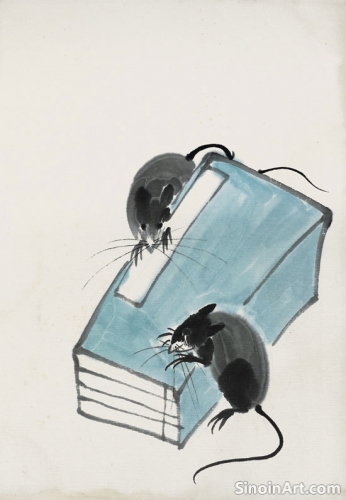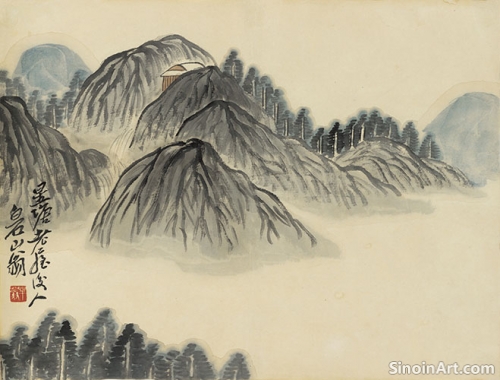Xieyi Painting and the Use of "Light Ink"
|
"Light Ink" or dànmò (淡墨) is an essential element in Xieyi painting, referring to the use of diluted ink to create subtle tones, soft washes, and a sense of atmosphere. The application of diluted ink is a valuable technique that is a major component of the art form. This method of applying ink allows for subtle variations that are often very powerful.  The use of dànmò can create a sense of distance, depth, and a delicate, ethereal quality, particularly in landscape paintings, allowing artists to capture the nuances of light, shadow, and atmosphere. The washes create a feeling of transparency and a hazy atmosphere that adds to the beauty of the Xieyi technique.  The dànmò technique requires a delicate touch, a mastery of the ink’s behavior, and a keen sense of control over the brush, allowing the artist to create subtle transitions and tonal gradations. The control of the dilution, and the application of the washes requires a great deal of focused practice. The subtleties in the washes are a testament to the skill of the artist.  Light ink is not just used to create soft backgrounds; it can also be used to define forms and textures, layering washes to create volume and depth. The layering of the washes creates a feeling of substance and a rich visual texture. The careful application of layers is an essential aspect of the technique. The skillful application of dànmò adds a sense of subtlety, nuance, and a quiet beauty to Xieyi paintings, creating works that are both expressive and atmospheric. It is the ability to use such subtlety that makes the art form so powerful and moving. The washes add a sense of depth, calm, and tranquility to the composition. |
Tag : Light ink, Danmo, diluted ink, subtle washes, Xieyi technique
Related information
- The Significance of Brushwork in Xieyi Painting
- Common Subjects in Xieyi Painting
- Xieyi Painting and the Depiction of Trees
- The Concept of "Yi Bi Cheng Qiao" in Xieyi
- The Brushstrokes of Xieyi: Mastering Spontaneity
Brushwork is at the heart of Xieyi painting, serving as the primary means of artistic expression. The brush is not merely a tool; it is an extension of the artist’s hand and emotions. Mastery of the brush is essential to conveying the spirit and essence of a subject.
Common subjects in Xieyi painting include bamboo, plum blossoms, landscapes, birds, flowers, and animals, each imbued with symbolism and representing aspects of nature and the artist's inner world.
Trees are a powerful subject in Xieyi painting, depicted through expressive brushwork and washes to capture their unique forms, textures, and symbolic representations of longevity, growth, resilience, and the connection between the human and natural realms, conveying both beauty and a profound appreciation for the cycles of life.
"Yi Bi Cheng Qiao" (skill achieved in one brushstroke) is a key concept in Xieyi, emphasizing precision, confidence, and spontaneity in each brushstroke, aiming for efficiency, expressiveness, and a seemingly effortless display of skill, acquired through dedicated training and a deep connection with the art form.
This article delves into the various brushstrokes and techniques used in Xieyi painting, emphasizing the importance of mastering spontaneity and ink control to convey the spirit of the subject.